Swimming with dolphins is just about as magical as is sounds…. Until they crap in your face.
It’s early morning in East New Britain, and a pod of nearly 100 dolphins encircles our little boat, spinning, diving, gurgling … doing all the typical dolphin things. Donning snorkels, we jump into the water and grip tightly to a rope trailing alongside the boat as it motors over the reef. Dozens of dolphins swim up from the depths to bounce alongside us in the boat’s wake, curious and playful. It’s pure joy.
And then up ahead I see a green-brown cloud blossom from the group infront of us. By the time my curiosity transitions to understanding — and then horrified delight — I’m immersed face-first in the murk.
That dolphin just shat in my face.
But it shouldn’t be all that surprising. Where there is life, there is also poop. And given mankind’s Freudian fascination with fecal matter, it’s surprising that us nature-lovers don’t spend more time investigating the intestinal end-products of the animal kingdom. But happily for all of you, we’re here to bring you seven incredible tales of excrement from the natural world … without the face-first immersion.
Top 10 List
-
Wombat waste is square
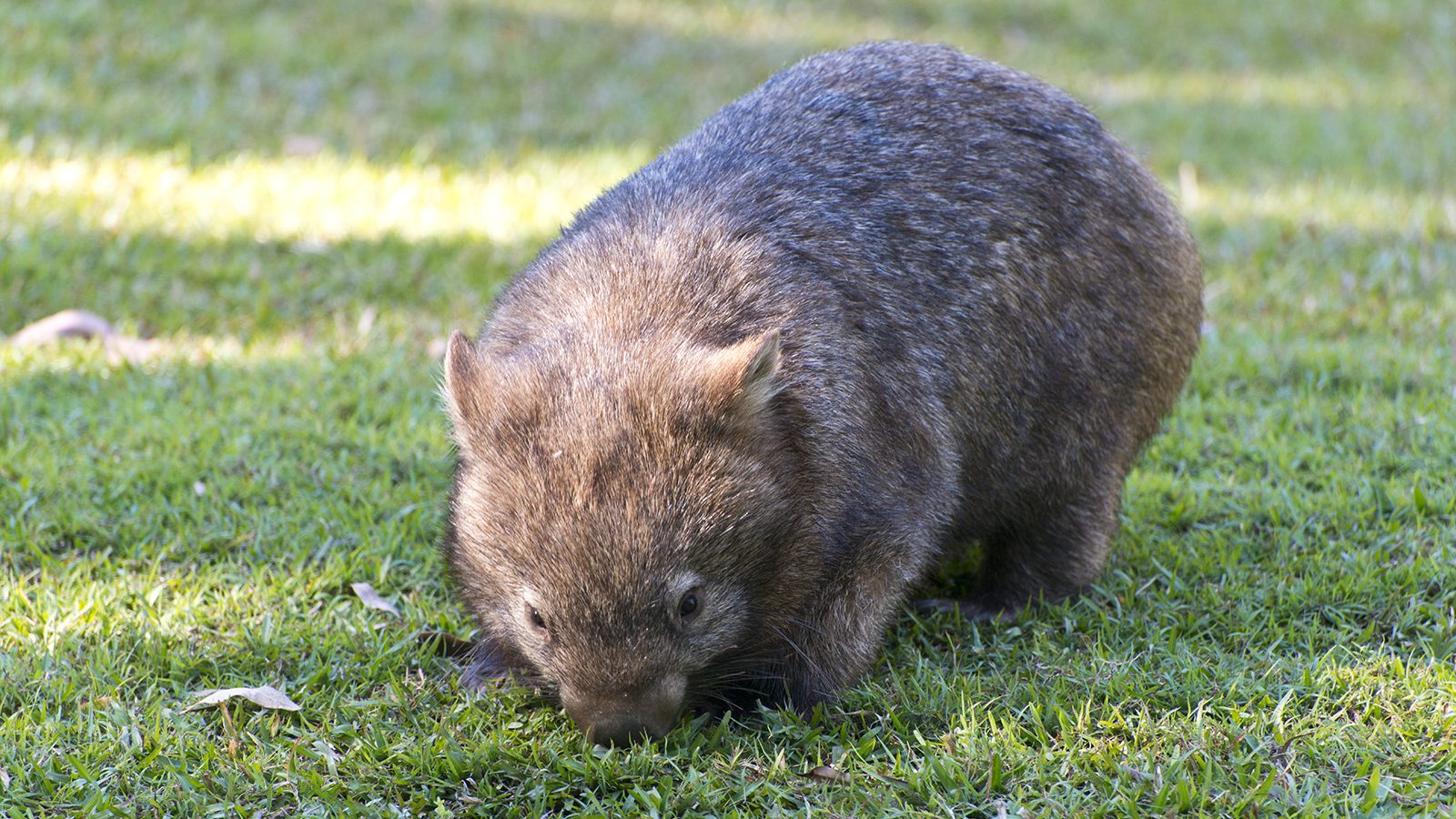
Photo © Steve Collis / Flickr I always feel a bit sorry for wombats. Though sheepishly adorable, they’re squat, dumpy, and lack the bounce-and-bluster of the kangaroo or the evolutionary absurdity of the koala. But wombats have one trick up their sleeves that makes them rather special — they poop perfect little cubes.
Each day a single wombat lovingly deposits between 80 and 100 square pellets all around the edge of its territory. But… just… why? The answer isn’t obvious. Apparently a wombat’s anus is round, so their poo isn’t squeezed into shape upon exit. To solve the mystery, we have to look deeper.
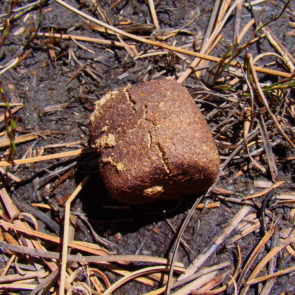
We weren’t kidding. Photo © Bjørn Christian Tørrissen / Wikimedia Commons Wombats eat a high fiber diet — grasses, sedges, roots and bark — and have a very long and slow digestive system. Ridges in the intestines help mold the poo into a long rectangle. And by the time all that vegetative matter makes its way from mouth to bum, it’s so hard, dry, and compacted that it keeps it cuboid shape as it’s squeezed out.
Geometric poo isn’t the only weird thing about a wombat’s backside. They also use their bums — which have a thick layer of cartilage and fur — to defend against predators. At the first sign of danger a wombat will dive down its burrow, head first. Any intrepid dingo or other predator that follows it down will have a hard time grabbing onto the tough rear and stubby tail. (As if having to bite a bum wasn’t bad enough.)
Check out this story for more about the comically cuboidal wombat poo.
-
Lemurs use their toilets as telephones
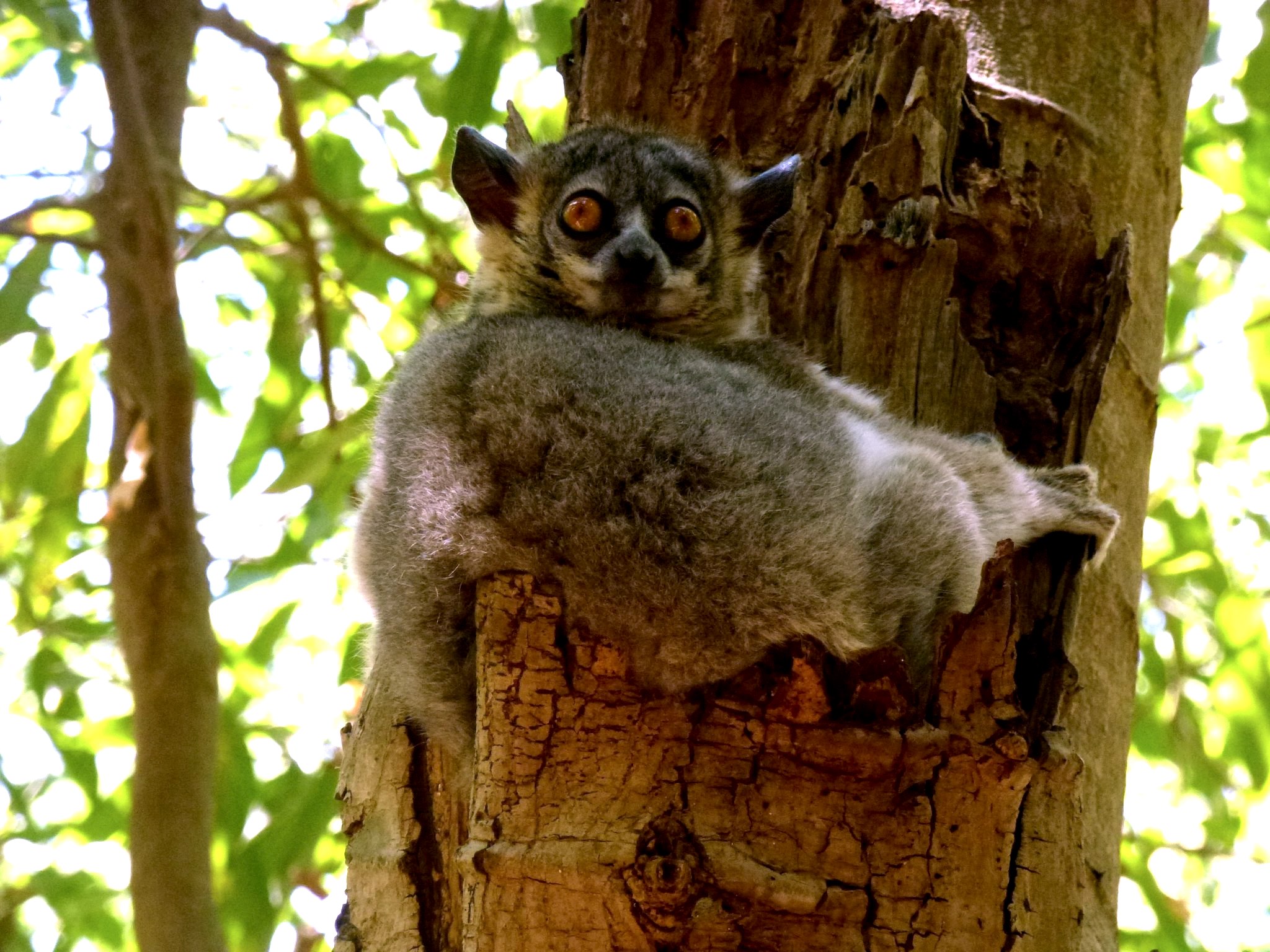
I’m cute… until you learn what “coprophagus” means. Photo © Hiroki Ogawa / Wikimedia Commons Well, here’s a novel way to stay in touch with your family.
The endangered white-footed sportive lemur lives in a tiny patch of forest at the southern tip of Madagascar, in dispersed family groups. Scientists in Germany knew that the species used communal latrines, but they didn’t know why. So, naturally, they radio-collared 14 lemurs and spent more than 1,000 hours watching them do their business.
It turns out that the lemurs use their tree toilets as a way to communicate with far-flung family members. Although the lemurs live with parents or offspring in the same territory, they don’t actually interact with each other all that much. By sharing a commode, the lemurs can sniff their relatives urine and maintain their social bonds. But what about the poop? The lemurs are coprophagous, meaning they often eat their own turds to make absolutely sure they got all the nutrients out of them.
Lemurs aren’t the only critter to combine their potty-power into group toilets. Guanacos in South America go in group latrines strategically chosen on the edge of their territory. (One still-active pile I saw in Patagonia measured more than 6 feet across.) Many other ungulate species do the same, as do badgers, howler monkeys, meerkats, hyenas, ocelots, and tiger quolls.
-
Sandy beaches are really just parrotfish poo
Ah, the South Pacific. Palm trees waving lazily in the breeze, turquoise-blue waters, and soft, white-sand beaches stretching for miles. It sounds like paradise … until you realize that the world-famous sand beneath your beach towel is parrotfish poop.
Parrotfish help keep coral reefs healthy by grazing on algae. As they munch along, their fused, beak-like teeth bite and scrape away at both the algae and the coral that it grows on. The parrotfishes’ digestive system (which includes more teeth inside their throats) breaks down those coral bits into the white sands that make South Pacific beaches famous. Known as bioerosion, this process helps control algae populations and create new surfaces for baby corals to attach to and grow.
But just how much poo can a parrotfish produce? Surely it can’t be enough to really make whole beaches? Think again. Scientists estimate that a single Chlorurus gibbus parrotfish can poop out more than 2,000 pounds of sand each year. Happy sunbathing!
-
Penguins are masters of projectile pooping
This video needs no commentary. Behold, the majesty of the gentoo penguin’s rectal projectile system.
Oh, and it gets better: Some penguins poop pink. Penguin diets vary by species and by the time of year. When a bird’s diet is high in krill and other crustaceans, they produce guano that’s distinctly pink. (See the Adélie penguins here, who are modeling this delightful gastrointestinal phenomenon all over their bodies.)
Technicolor projectile capabilities aside, penguin guano has other uses. Some intrepid (and presumably anosmic) scientists study how the massive amounts of guano produced by penguin colonies affect antarctic soils. And others are identifying and tracking penguin colonies by — wait for it — using satellites to detect the changing colors of their guano stains, which are visible from space.
Yes, that right. Mapping penguins. With poop. From space.
-
Defecation can be deadly for sloths
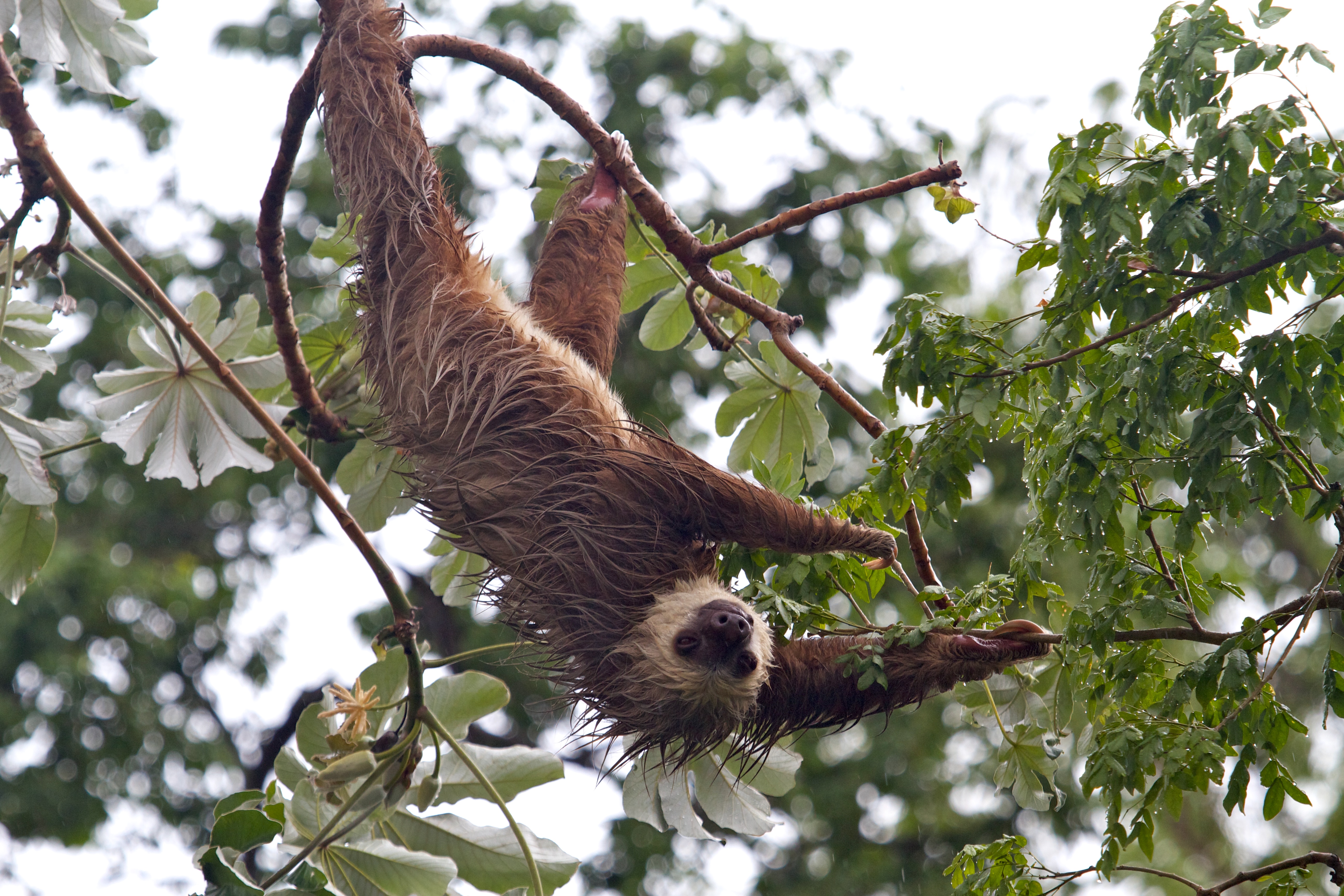
It’s probably a good thing sloths don’t poop from this angle. Photo © Brian Gratwicke / Flickr For most of us, a trip to the loo is inconvenient at worst. But for sloths, pooping puts them in serious peril. First off, they’re not exactly regular. Species like the three-toed sloth poop about once every week, so by the time they’re ready they have quite a backlog of inventory. One sloth biologist estimates that the animals lose about a third of their body weight with each poo.
And the ordeal is dangerous, aside from the risk of hemorrhoids. Mysteriously, sloths descend from the canopy to poop on the ground. But it’s here that they are most vulnerable, and where as many as 50 percent of sloths meet their maker, in the form of a hungry jaguar or other predator. As to why they insist on pooping on the ground? The jury is still out, but one (somewhat controversial) hypothesis is that it’s part of a symbiotic relationship between sloths, algae, and moths.
Science writer Jason Bittle was lucky enough to catch a sloth in the act — and film it. Check out the video and his story to learn more about sloth potty habits. (But we’ll warn you, you may want to finish your meal first.)
-
Vultures and storks poop on their feet, purposefully
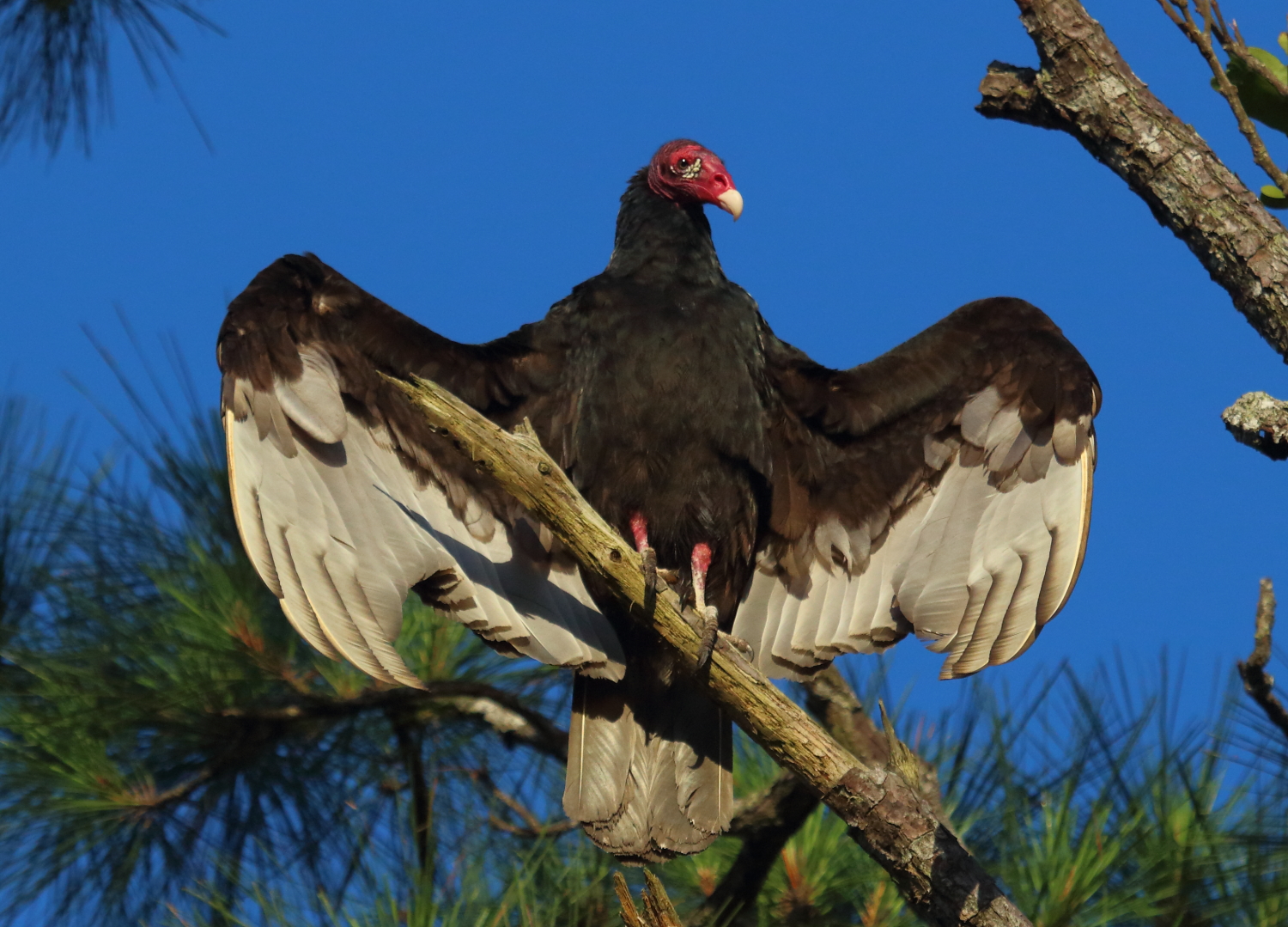
What are you looking at? Photo © Feroze Omardeen / Flickr I have a bit of a thing for vultures, and I’m not the only one. But I understand most people’s apprehension… turkey vultures aren’t exactly cuddly. And if you did try to cuddle one, you’d end up with a very unpleasant surprise.
Turkey vultures, along with other vulture and stork species, have a very memorable way of staying cool on a hot day. They lack sweat glands, and feathers don’t work all that well if they’re wet. So what’s a turkey vulture to do? Crap all over themselves, apparently.
By defecating on their feather-free legs, the birds add moisture to the skin that can then evaporate like sweat. The mixture of crap and urine is also sterile, helping to decontaminate the bird’s legs after they’ve been wing-deep in rotting carcasses.
Speaking of bird poop… birds are also notable for having a different elimination system than placental mammals. Instead of separate rectal and urinary openings, birds eliminate all waste through a single opening called the cloaca. They share this setup with reptiles, a nod back to their evolutionary origins. But wait, there’s more: the cloaca lacks a sphincter, meaning that pigeon in the park didn’t crap on you on purpose. It was just unfortunate timing.
-
Whale poo acts like fertilizer for the oceans
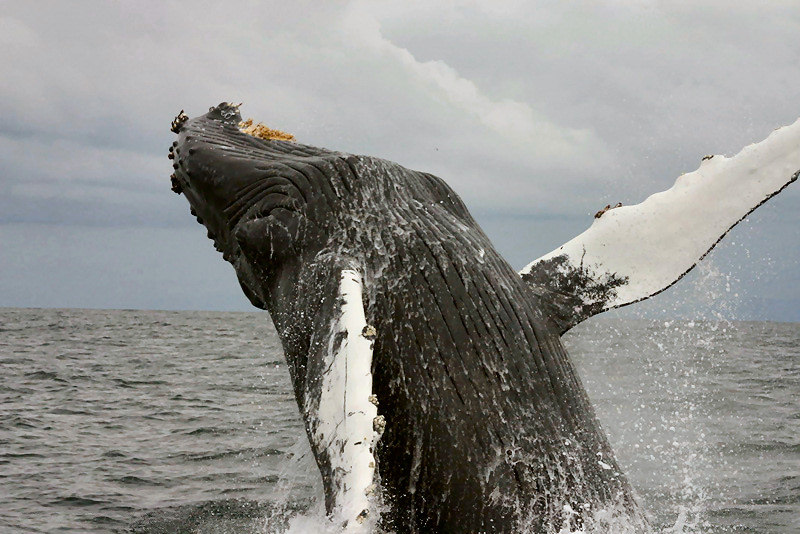
Photo © Protected Resources Division, Southwest Fisheries Science Center, La Jolla, California. / Wikimedia Commons Life in the ocean needs nutrients, just like your garden. And it turns out whales are quite the gastrointestinal gardeners. Baleen whales, like blue and humpback whales, consume vast amounts of krill, plankton, and small fish each day. These krill and phytoplankton are rich in iron and nitrogen, two key oceanic nutrients that are not evenly distributed in the water column.
The further up the food chain you go, the more concreted the levels get. And what goes in must come out. So whales act like giant oceanic fertilizers, re-depositing iron and nitrogen back into the ocean’s surface waters every time they poo. More whales, more poo, more plankton, more oceanic life. This is especially important in places like the Southern Ocean, which doesn’t receive a lot of nitrogen or iron as runoff from land, because, well, Antarctica is frozen. (For now). Whales are such key players in the ocean nutrient cycle that their en-mass slaughter by whalers negatively impacted the ocean’s ability to store carbon. Yikes.
While you’re here, we have one more revolting whale-poo story for you. Divers swimming with a sperm whale got an unpleasant surprise when the whale unleashed a giant bowl movement — dubbed a “poonado” by the media — over the unsuspecting divers. And yes, there are photos.




How can the feces of Turkey Vultures be sterile? All excrement has known bacteria content as far as I know.
It has been my experience over the years that these birds mostly urinate on their legs. When there is feces present, it is generally down by the toes; which suggests they are only meaning to urinate on themselves.
Urine is sterile of course and, even better, is that the white powder you see staying behind on the legs (after the urine evaporates) is uric acid; most likely capable of killing off bacteria that comes into contact with it. It is only old world vultures and the Marabou Storks that do it.
This is so interesting, thanks so much!
We have a bright yellow dropping and also pink….quite large in an area with mulch. Anything that might. Be pooping there?
Hi Elaine, Without a picture, it’s hard to know. I’m guessing from your description that it could be a kind of slime mold rather than droppings, but I can’t be sure. If you have a picture, I suggest submitting it to iNaturalist. Thank you for the question!
Awesome article! finish reading without any break!
Now, that article was really full of it….great information rarely covered anywhere else. Scatology can be extremely important, informing us about the lives of animals, how they live, what they eat, territories they petrol etc……even paleontologist have learned amazing facts from “petrified” dinosaur dung. Thanks for the fascinating presentation.
I like the one with the penguins. It reminds me of what our town’s government does to it’s people.
I love animals and nature more then I can explain. I fell that we are surrounded by magic mysterious and beautiful creatures that we pretend to know and we look down on but we do not know much at all.I hope that all can change because we are all here with them and they have has much right to be hear as we do.